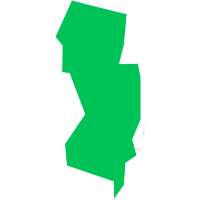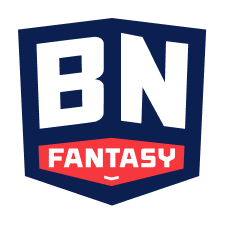There are many ways to bet on sports. Betting on your favorite teams, using your intuition, and statistical handicapping of teams are just a few.
But what does +EV mean in betting? +EV betting is a great way not only to learn the ins and outs of the basic math behind sports betting, but also to make some money in the process in a quantifiable way.
EV betting is not about what you think will happen, but about an advantage you have over the implied probabilities of bets by using lines and information sportsbooks are already giving you.
Here are nine things I consider critical to know for +EV betting.
PromoGuy's +EV Betting Guide
| Table of Contents | |
| 1.Understanding Vig | |
| 2. What Is EV? | |
| 3.Correlation | |
| 4. Variance | |
| 5. Unit Size | |
| 6. Arbitrage | |
| 7. Bonus Bets | |
| 8. Odds Boosts | |
| 9. Promos | |
1. What Is Vig and Why Does it Matter?
The best way to think about vig is that it’s the amount the sportsbook expects to make on any given bet.
And it matters because to get the true probability of an event, we need to remove the vig.
If we flip a coin with a sportsbook, they theoretically would make it -110 for heads and -110 for tails. In the long run, we'd always lose no matter what.
The -110 odds on each side would imply that the 0-vig line is even money (50% probability). This 0-vig line of 50% matches the probability of a coin toss outcome. The difference between the -110 odds and the +100 fair odds is the vig.
The vig is equal to the payout of the bet minus the 0-vig line times the probability of winning:
(100/1.1 – 100) *.50 = ~4.55%
There are 0- vig calculators online to help you convert odds into 0-vig lines (most are flawed but will get you close enough the vast majority of the time).
| » Return to the table of contents « |
2. So What Is Expected Value?
EV stands for expected value — in other words, the gap between the true odds of something happening and the sportsbook's posted odds.
The expected value of your bet is based on the 0-vig line (50% in coin flip case).
Expected value the way I use it is always based on fair lines from sportsbooks and not what I or any other model think will happen.
A coin toss is always the easiest example — the fair odds of a coin toss are 50/50 or +100.
- So if you had +120 odds on tails, the EV would be (120-100) * .5.
- That's $10 expected winnings on a $100 bet, or 10% EV.
If we make 100 of these 10% EV bets we would expect to net $1,000 on those 100 bets.
EV is not about what you think will happen, but about the advantage you have over the implied probabilities using Vegas lines.
While getting +120 on one singular coin toss may not sound that great, over time with hundreds of coin tosses at +120 we expect to (and do with +EV sports betting) make a lot of money in a low-risk way.
While many people would dive into specific matchups, recent form or weather, we let the experts who set the lines and smart folks who bet into those lines do the work for us and assume these lines are perfectly reflective of the implied probability the event will happen.
Just like we did in the coin toss example.
| » Return to the table of contents « |
3. Correlation
Correlation is a statistical measure that expresses the extent to which two variables are linearly related.
This is the technical definition — for our purposes, I like to think of it as the probability of one outcome (a bet in our case) happening given another outcome happening.
An example I like is a boost Barstool used to run called Pirates booty. They boosted the odds of the Pirates to both lose and go under their team total — obviously if the Pirates go under their total, they're more likely to lose. These two outcomes are very much correlated.
Here was my analysis back in May 2021 of this boost and how I looked at quantifying the correlation (summary below if you don't feel like reading all of that):
As promised, I have dug deeper so that I can better price/assess these for you guys and the results are really strong. I am using the lines from the other day but will obviously start to update it daily.
There are 3 ways (imo) to best assess Pirates under 3.5 runs and lose lines https://t.co/SYwYIedeNy
— The Promoguy (@ThePromoguy123) May 12, 2021
A summary of the above, I looked at:
- How much more likely the Pirates were to lose given they scored fewer than 4 runs
- How much more likely they were to score less than 4 runs given that they lost
- And the general correlation coefficient of win percentage vs. runs scored.
Using the Pirates odds of scoring less than 3.5 runs and the Reds moneyline in that game, the three methods outlined above gave us fair odds of -103, +122, and +110 respectively.
So even though the uncorrelated, 0-vig line (parlaying Reds moneyline and Pirates under) was +190, the true fair odds were actually much lower and pushed this into a strong +EV bet.
My tweet above had the most conservative method yielding +122 fair odds after accounting for correlation (+190 fair without correlation, meaning the Pirates were significantly less likely to score over 3.5 runs if we know they lose the game) for +21.62% EV since Barstool was offering +170.
| » Return to the table of contents « |
4. Variance
Variance is the difference in results vs. the expected results. Variance is at its highest when sample size is low.
The picture below is five different simulations (shown as different colors) of various coin flips all at +10% EV. You can see in the bottom with lower sample size that +EV doesn't always equal profits, but that with a high enough sample size of bets, we end up having profits that are very close to where we expect. This is reflected in the 500 and 1,000 coin flip simulations.

The biggest determinant of profits with high sample size is going to be EV or payouts in the coin flip case, rather than luck. However, we can see that when there is a low sample size that EV is less important, variance is a lot higher, and luck becomes the biggest factor.
With five flips, the largest determinant of profits is how well the coin flips went rather than the payout when you win. That is because winning three coin flips vs. two is a 150% difference and is easily explained by the luck of the draw.
It is extraordinarily rare to see 300 out of 500 flips go your way or 200 of 500 go against you.
What this means for us is while on a short-term basis, bettors should expect to go on hot and cold streaks and have results differ from their expected profits (good and bad), but over the long haul your profits/losses should line up much closer to your EV (as seen in the 500/1000 flip simulations).
The sports translation: We're betting most boosts with edges around 10% (just like the graphs). In the span of a day/week/even a month, our results can be variable. But over the long run, our results will have less variability and will closely match expectations of 10% returns.
| » Return to the table of contents « |
5. Unit Size/ Bankroll Management
This can be a tricky one as everyone does it differently. The most common method is 1u = 1% of your bankroll (with bankroll being what you are “allowed” to lose gambling before stopping).
Many people also like to use Kelly criterion, but it can often end with results that have you risking uncomfortably large amounts.
One thing I do agree with on the philosophy is that you will maximize your bankroll at lower variance by prioritizing two things when determining bet sizing:
- EV%
- Likelihood of winning.
Ultimately, I would say to start off small and grow from there.
I don’t like to tell people to risk too much and people treat their bankrolls differently, so I usually track at 1 unit or less wagered.
My advice would be to start small with amounts you're comfortable losing and go from there. If losing your bet(s) would ruin your day (whether due to the stress of potentially losing or the losses themselves), then you should lower your bet size. As your bankroll grows and you become more comfortable with +EV betting, you can look to increase your wager amounts slowly.
In my opinion, it is better to keep this an enjoyable hobby and make a little bit less in the long run than to have it control your life and make slightly more.
Hopefully, you are earning a living outside of gambling and this is for fun. Winnings going to treat yourself and your family rather than being relied upon as income.
| » Return to the table of contents « |
6. Arbitrage
"Arbing" is making money through betting on opposing sides of the same line. So you'd make money regardless of the outcome.
Here's an example. Barstool has Mike Trout to hit a home run at +300 and DraftKings has Trout to not hit a home run at –275.
You can bet $100 on Trout to hit a home run to win $300. And then you risk $293.33 on DraftKings for him not to hit a home run to win $106.66.
| Bet | Payout | Outcome | Winnings |
|---|---|---|---|
| Trout HR +300 | $100-$300 | $300-$293.33 | $6.67 |
| Trout No HR -275 | $293.33-$106.66 | $106.66-$100 | $6.67 |
So you make ~$6.67 no matter what happens with Trout.
This is a strategy likely to get you limited at sportsbooks but I still often reference something being "arbable" to describe the value in certain bets.
The fact that a bet is “arbable” means that one of the two sides must be +EV as there is money that can be made by betting both.
| » Return to the table of contents « |
7. Bonus Bets
Many books give bonus bets as part of various promotions and sometimes just because they're feeling nice.
To maximize the value, you want to bet longshots.
Example: In a vig-free world, if you have a $100 bonus bet that you use on a +900 underdog, you will win your bet 10% of the time. This means the EV of the free bet is $900 x 10% = $90 EV.
If you instead were to bet on a -900 favorite you would win $11.11, 90% of the time. That's just $10 EV.
The EV (expected value) of a bonus bet is often referred to as bonus bet conversion. If you are able to make $90 in cash for every $100 bonus bet over the long run you would be converting at 90%.
If instead you only convert $50 in cash for every $100 bonus bet then you would convert at 50%. An uninformed better may be prone to taking a -110 generic spread they like for a bonus bet and only winning 50% of the time with a $90.9 payout for a ~45.45% conversion. Using your bonus bets at higher conversions can have a dramatic impact on your bankroll over time.
The caveat here is that betting on +900 underdogs often comes with heavy vig (longer odds tend to have wider markets) and that can cut into the bonus bet conversion. Not to mention in cases of large bonus bets, people may want to win more than 5-10% of the time.
I have found +300 to +700 to be a nice sweet spot for bonus bets when it comes to one-bet plays. It could be solid lines on a home run, touchdown, first basket, etc. I often times will parlay regular tight spread lines (that are favorable on that book) together to form longshot plays while trying to keep the vig on these plays minimal.
Targeting tight markets with advantageous lines relative to other books that land you at +300 or greater is a solid long-term strategy for your bonus bets.
| » Return to the table of contents « |
8. Odds Boost
An odds boost is when a book boosts the odds on a bet to give you a better payout than the original odds. This is often done to attract new customers and/or to keep existing customers happy.
Just because a sportsbook boosts the odds of a bet does not make it +EV. The boost has to be greater than the vig.
A hypothetical example: Mets/Marlins over 9.5 and Yankees/Red Sox under 9.5 boosted to +350.
Let's say both of these lines are perfectly -110 balanced on each side – just like the coin toss. Meaning if we trust the folks making and shaping these lines, they each have a 50% chance of hitting.
The normal parlay odds would be +264 (110/210*110/210 = 27.43%) and the 0-vig parlay would be +300 (50% *50% = 25%).
This is no different than the implied odds of two coin flips both landing on tails.
Instead of +300 (25%), we are getting a boost to +350 (22.2%). The EV calculation is (boosted odds – 0 vig odds) multiplied by the implied probability of winning the bet:
This means that if we bet $50, we would expect to make $6.25 per $50 wagered. If we make 100 of these bets, we would expect to make $625 on those 100 bets.
Had the boost been from +264 to +290 instead of to +350, this would be better than the original odds, but still a negative EV bet. It does not overcome the vig as it would pay out less than the +300 fair odds.
Again, we're not doing any handicapping. We're just taking sportsbook lines, removing the vig, and comparing it to the boosted price. We're trusting the people making and betting into these lines.
Sometimes sportsbooks can have different lines for the same bet making finding a 0-vig line a little less clear. I like to use a consensus approach looking at everyone's lines, but ultimately factoring in sharper books that show tighter markets with higher max bets more heavily.
You can use this basic math for any boost, though the math starts to get much more complicated when you factor in correlation, as we outlined above. Be sure to explore the incredible offers with the BetMGM bonus code.
| » Return to the table of contents « |
9. Promotions
Similar to odds boosts, sportsbooks often run promotions to attract new customers and/or to keep existing customers happy.
Books like to encourage betting via bonus bets or site credit if you make certain forms of bets. Depending on the reward for making the original bet, the EV can be quite high or low on these promos, but sometimes that math is a little more in-depth — or you at least need more data.
An example of a strong promo and the way I went about it.
DraftKings ran an NBA finals promo where your moneyline bet would get paid out if the team went up 10 points, even if they lost. I went through every game from the 2019 season and found that 55.6% of road teams went up by 10 at some point.
The EV for an outcome with a 55.6% probability on a +145 bet (what the Celtics were priced at) is 36-37%.
Must bet on draftkings: my conclusion is this is a very strong promo with the better play being the celtics at an ev of ~+36%. I believe min people got is $100 but if you got less lmk and I’ll track to lowest number.
Process for how I got the EV provided in tweets below ⬇️ https://t.co/89NUsNmenS
— The Promoguy (@ThePromoguy123) June 2, 2022
Here is an example of a not-so-great promo I passed on: Bet $25 on a player to score first and get your money back if they don’t score first, but do score at some point in the NHL game.
I am passing on the fd nhl promo as I believe it to be close to 0 ev and possibly negative:
Let’s use 70% free bet conversion (I track at 50% but 70% is achievable)
We receive a $25 free bet when our player scores a goal if he doesn’t score first
Math below with Kreider 13/1:
— The Promoguy (@ThePromoguy123) May 26, 2022
| » Return to the table of contents « |
























































